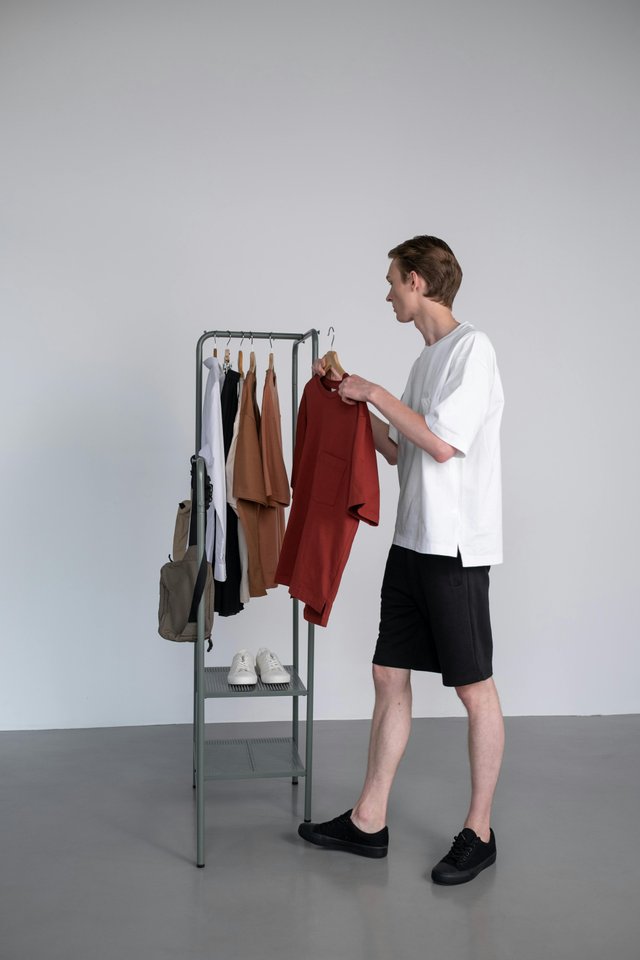Say No to First Copy Clothes – Here’s Why?
In a fashion market flooded with trends and rapid cycles, authenticity stands as a crucial hallmark of genuine style. Yet, the growing allure of first copy clothes and accessories tempts many consumers, often masking hidden risks behind affordable price tags and deceptively stylish appearances. While the appeal of buying a luxury item at a fraction of the cost seems enticing, the truth behind these replica clothes and counterfeit fashion items is far less glamorous.
This article uncovers the reasons why opting for original fashion over imitations not only preserves your integrity but also protects you from significant ethical and legal pitfalls.
The Dark Side of First Copy Fashion
The industry of counterfeit fashion thrives on deception. At first glance, first copy items may appear indistinguishable from genuine brands, offering consumers a false sense of luxury. However, the reality is far less appealing. From compromised quality materials to shoddy craftsmanship, first copies seldom deliver on the long-term satisfaction they promise. The fabrics often deteriorate quickly, leading to frequent replacements that ultimately make the initial savings meaningless.
Additionally, behind every replica is an industry riddled with unethical labor practices and exploitation. Workers producing counterfeit items usually operate under deplorable conditions, often facing inadequate wages, unsafe working environments, and no legal protections. Supporting first copy markets indirectly fuels these exploitative practices.
Ethical Concerns and Consumer Responsibility
As consumers, our purchasing decisions extend far beyond personal benefits. Opting for original garments or accessories rather than replicas is a meaningful stance against unethical business practices. Each genuine product supports a transparent supply chain, ensuring workers’ rights and environmental compliance. Brands producing authentic fashion often invest heavily in fair labor practices and sustainable operations, contributing positively to society and environmental conservation.
Moreover, choosing authenticity strengthens your brand. It’s not merely about owning an item; it’s about what your choices communicate about your values. Standing firm against replicas sends a clear message of integrity, awareness, and responsibility.
Quality Matters: Why Originals Last Longer
Authentic brands meticulously maintain quality standards, distinguishing their offerings significantly from first copies. Unlike replicas, original clothing items endure rigorous quality control processes, employing premium materials designed for durability. This means your authentic clothes withstand wear and tear far better, ultimately saving money over the long term.
By contrast, first copy clothes lack this commitment to quality. Such products often quickly reveal their flaws, colors fade, stitching unravels, and accessories break apart easily. This ongoing replacement cycle makes replicas deceptively expensive, defeating the original purpose of purchasing cheaper alternatives.
Legal Implications of Buying Replica Clothes
Beyond quality and ethics, there is a clear legal dimension to consider. Engaging with counterfeit markets can expose consumers to potential legal repercussions. Purchasing and owning the first copy of watches or branded replicas may appear harmless, but in several jurisdictions, it constitutes an infringement on intellectual property rights, punishable by fines or legal action.
Moreover, counterfeit industries undermine genuine brands, diverting revenue away from legitimate creators. This harms not only businesses but also the innovation and creativity these brands support through continued investments.
The Benefits of Supporting Genuine Fashion
Choosing authentic clothing brands not only ensures personal satisfaction and long-term quality but also fosters a healthier economic and ethical environment. When you invest in legitimate fashion, you are actively participating in an ecosystem that prioritizes quality, innovation, fair labor, and sustainability.
Supporting original brands contributes to maintaining standards of creativity, encouraging designers and manufacturers to continue developing new products responsibly. It also elevates your own wardrobe’s value, turning your purchases into lasting, worthwhile investments.
By saying no to first copy clothes, you uphold ethical standards, preserve quality, avoid legal risks, and contribute positively to a fashion industry built on integrity and innovation. Choose authenticity, your wardrobe and conscience will thank you.
For genuine fashion and ethical choices, visit us at KapraBazar.
FAQs
1. Are first copy clothes illegal to buy?
Yes, purchasing and owning counterfeit items is illegal in many countries and can result in fines or other legal penalties.
2. Why are replica clothes cheaper than authentic ones?
Replica clothes are cheaper because they often utilize inferior materials, lower production standards, and unethical labor practices to cut costs.
3. Can the first copy clothes match the quality of the original brands?
No, first copy clothes rarely match the quality, durability, and finishing standards of authentic brand clothing.
4. How do first copy products affect genuine brands?
First copy products negatively impact genuine brands by diverting revenue, harming brand reputation, and discouraging innovation.
5. How can consumers identify the first copy or replica clothes?
Consumers should look out for suspiciously low prices, irregular labels, inferior packaging, and buy directly from reputable stores or official brand outlets to avoid replicas.
